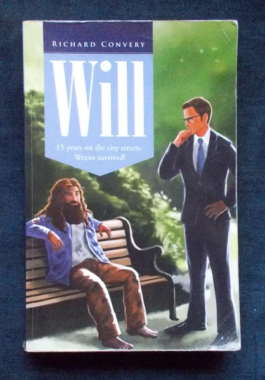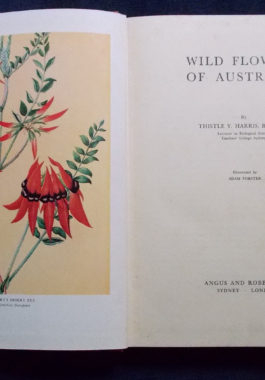-

Witch-Children: Hans Sebald
$95.00The period of persecution and execution of so-called witches is a venomous chapter of Western civilisation. The hunt extended from the Middle Ages into the early modern era, and from the Old World to the New. Although efforts have been made to understand this hysterical mass murder, many disturbing aspects are still shrouded in mystery. The participation of small children and adolescents, whether as the accused or as accusers, is crucial. Dr. Sebald examines a number of historic witch trials, including the infamous events at Salem, in England, Sweden, Austria and Germany. -

 On May 27, 1940, Wing-Commander Basil Embry (later Air Chief Marshal and Commander, Allied Air Forces in Central Europe 1953-56), although appointed to a higher command, decided to lead his old squadron into battle for the last time. Within the hour he was shot down in France and found himself alone, unarmed and in uniform. Capture was inevitable. He was, in fact, captured three times: on one occasion breaking from a column of prisoners under the muzzle of a German machine-gun and on another fighting his way out, killing three Germans with a stolen rifle and then hiding in a manure heap for nearly six hours. The most amazing of all of Embry's exploits was the occasion on which, in the role of a fanatical member of the Irish Republican Army, he shook his fist under the nose of a German inquisitor, yelling hatred and abuse of Britain until his captors finally turned him loose to find his own way home - which, by sheer courage and wit, he did, to fight and fly again. He was awarded the D.S.O. and three bars; and the D.F.C.
On May 27, 1940, Wing-Commander Basil Embry (later Air Chief Marshal and Commander, Allied Air Forces in Central Europe 1953-56), although appointed to a higher command, decided to lead his old squadron into battle for the last time. Within the hour he was shot down in France and found himself alone, unarmed and in uniform. Capture was inevitable. He was, in fact, captured three times: on one occasion breaking from a column of prisoners under the muzzle of a German machine-gun and on another fighting his way out, killing three Germans with a stolen rifle and then hiding in a manure heap for nearly six hours. The most amazing of all of Embry's exploits was the occasion on which, in the role of a fanatical member of the Irish Republican Army, he shook his fist under the nose of a German inquisitor, yelling hatred and abuse of Britain until his captors finally turned him loose to find his own way home - which, by sheer courage and wit, he did, to fight and fly again. He was awarded the D.S.O. and three bars; and the D.F.C. -
 Somerset Maugham - husband, father, bi-sexual; homosexual; playwright, author, thorough-going agnostic and - spy, recruited to the network of British agents who operated against the Berlin Committee during World War 1. Published in 1937, the aim of this book - which, according to the author, makes no attempt to be biographical in the strict sense - is to trace the developments of Maugham's style, technique and choice of subject matter in his novels, plays and short stories. There is also speculation of the the thought and philosophy of which Maugham's work is his eloquent expression.
Somerset Maugham - husband, father, bi-sexual; homosexual; playwright, author, thorough-going agnostic and - spy, recruited to the network of British agents who operated against the Berlin Committee during World War 1. Published in 1937, the aim of this book - which, according to the author, makes no attempt to be biographical in the strict sense - is to trace the developments of Maugham's style, technique and choice of subject matter in his novels, plays and short stories. There is also speculation of the the thought and philosophy of which Maugham's work is his eloquent expression. -

Will: Richard Convery
$12.00Fifteen years on the city streets -and Wezzo survived. Will is the story of Wezzo and Geoff, two school friends with the world at their feet, whose choices lead them down vastly different paths. Later, their worlds collide and once again they become uniquely linked. All of us make choices. But what happens when our choices plunge us into despair? What can we do? Who do we turn to? Wezzo's choices leave him homeless on the city streets of Newcastle, Australia, while Geoff's choices trap him in a maze of diabolical white-collar corruption. Yet they'd both started out full of hopes and dreams. Will is about triumph in the midst of tragedy, love lost, purpose found; the strongest of families torn apart then re-created in the most unlikely place. In a world hobbled with epidemic homelessness, Will portrays 'streeties' as gifted individuals who deserve another chance, rather than as shameful failures. Will contrasts the victims and the victors, the hopeless and the hopeful, a challenge not only to think about destiny - but to resolve it. And the ending...? It's definitely a surprise...
-

 Keith Brockie spent many months travelling throughout Scotland in order to paint, sketch and draw the diverse native flora and fauna of the British Isles. The artwork is delicate, fresh and vital and accompanied by Brockie's notes and observations - a real treasure.
Keith Brockie spent many months travelling throughout Scotland in order to paint, sketch and draw the diverse native flora and fauna of the British Isles. The artwork is delicate, fresh and vital and accompanied by Brockie's notes and observations - a real treasure. -

 First published in 1938, this is a beautifully illustrated companion for field botanists interested in the diverse colours and growth of Australian native flowers and wild plants. Part I contains colour plates with a non-technical description of each plant for quick and easy reference; Part II contains more precise and technical descriptions with botanical keys. Illustrated by Adam Forster.
First published in 1938, this is a beautifully illustrated companion for field botanists interested in the diverse colours and growth of Australian native flowers and wild plants. Part I contains colour plates with a non-technical description of each plant for quick and easy reference; Part II contains more precise and technical descriptions with botanical keys. Illustrated by Adam Forster. -
 Australia in the 1860s, the time of the roaming gangs of bushrangers, stealing gold and horses and seeking refuge among the country people who often protected the outlaws from the government troopers. Many bushrangers have been immortalised in song and legend: Donahoe, Frank the Darkie and Ben Hall, all of whom preferred to die with their boots on that to perish in irons. Here is the story of those adventurous years, when the Wild Colonial Boys baffled the law time and time again.
Australia in the 1860s, the time of the roaming gangs of bushrangers, stealing gold and horses and seeking refuge among the country people who often protected the outlaws from the government troopers. Many bushrangers have been immortalised in song and legend: Donahoe, Frank the Darkie and Ben Hall, all of whom preferred to die with their boots on that to perish in irons. Here is the story of those adventurous years, when the Wild Colonial Boys baffled the law time and time again. -

 The bushranging days of the nineteenth century are brought to life - the time when audacious gangs won notoriety by their crimes. This book vividly depicts the dark legacy of the convict system for both men and women, the stirring times of exploration and pioneering development, the hectic gold rushes and the riots they provoked - all the turmoil of life in a tough, rough, new country. Illustrated by Ralph Warner.
The bushranging days of the nineteenth century are brought to life - the time when audacious gangs won notoriety by their crimes. This book vividly depicts the dark legacy of the convict system for both men and women, the stirring times of exploration and pioneering development, the hectic gold rushes and the riots they provoked - all the turmoil of life in a tough, rough, new country. Illustrated by Ralph Warner.



